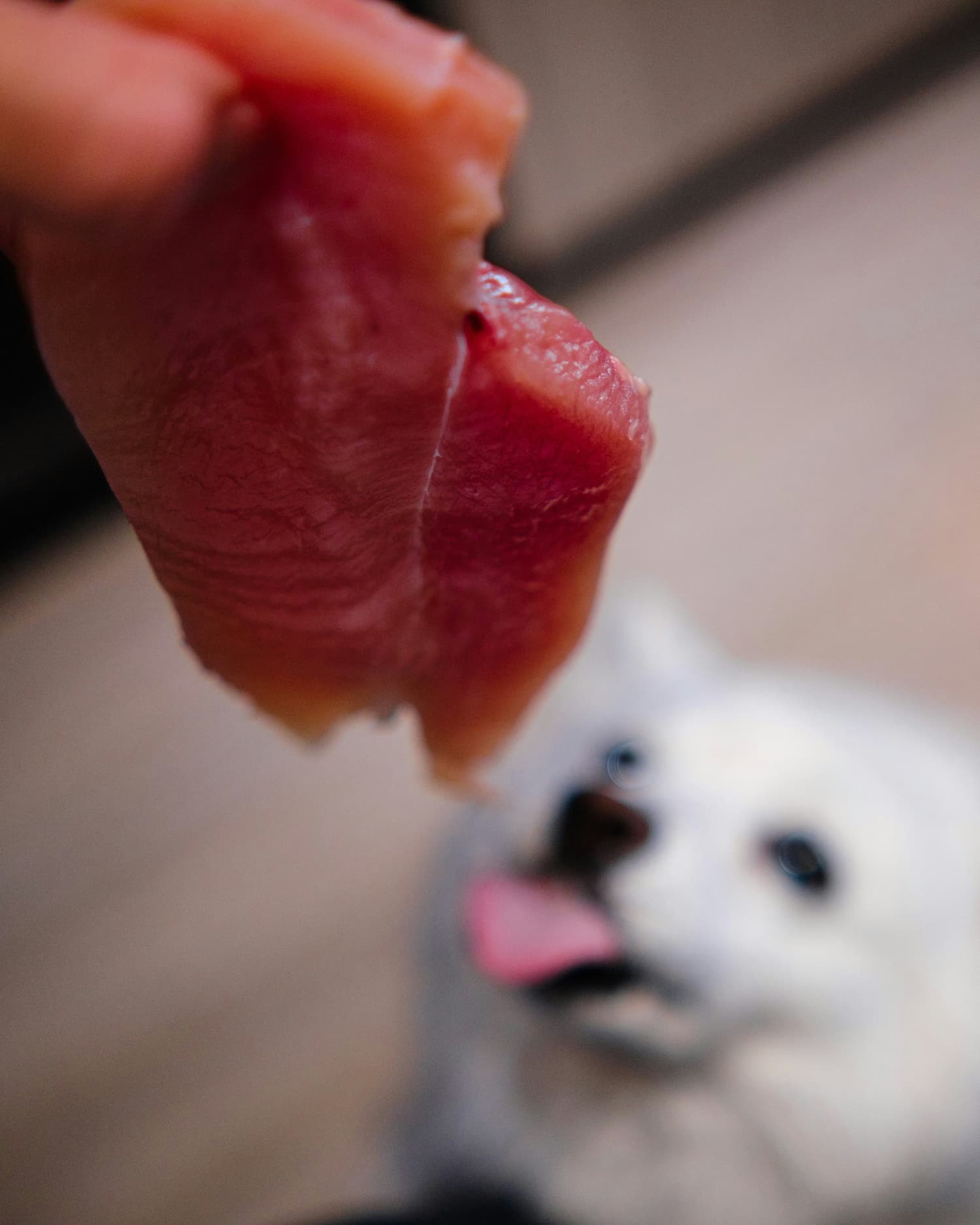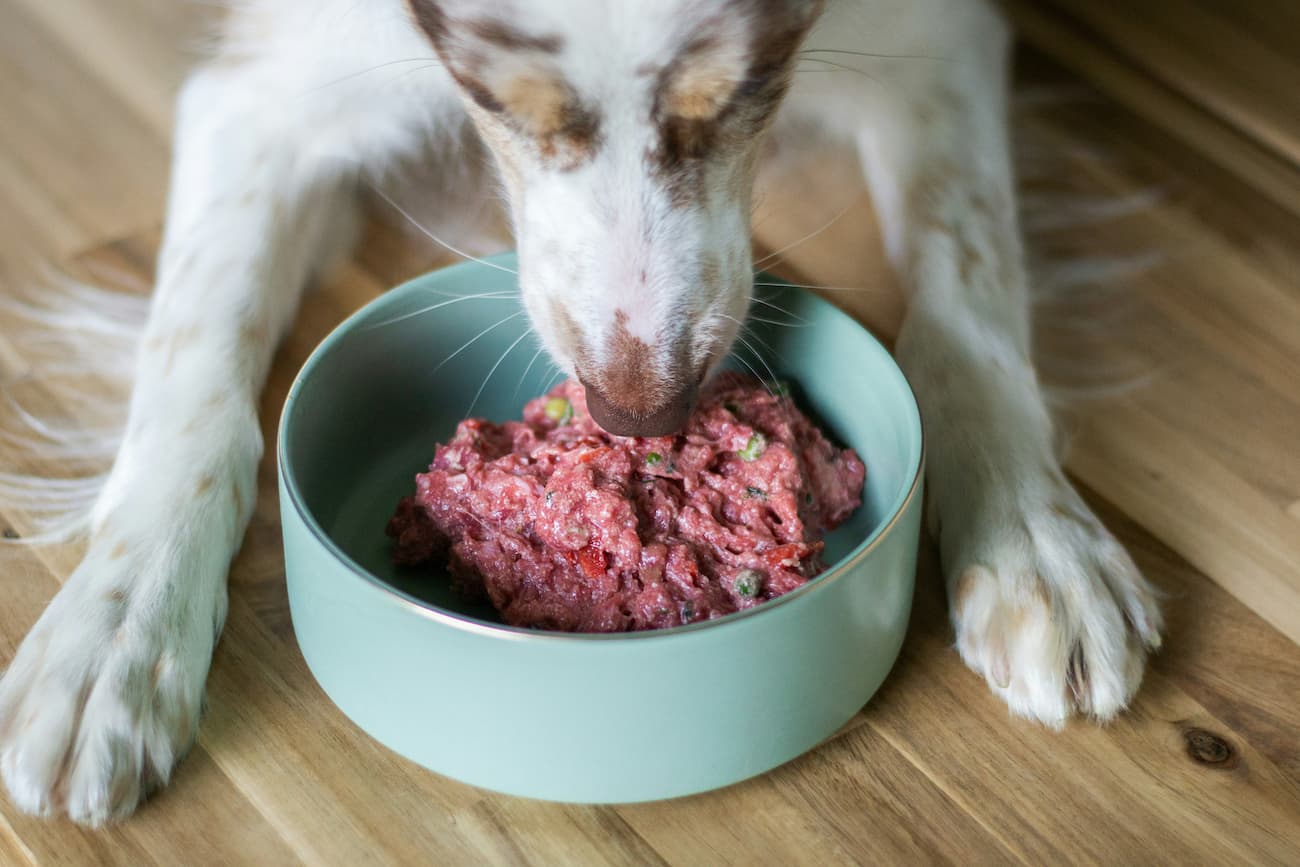As a dog owner, you’ve likely wondered about the best diet for your furry friend. Amidst the growing popularity of raw feeding, one question stands out: can dogs eat raw meat? This isn’t just a trend; it’s a significant shift in how we think about canine nutrition. While the idea of feeding raw meat might seem natural, it’s essential to understand the full picture—both the potential benefits and the risks involved. This article will explore everything you need to know about raw meat diets for dogs, helping you make an informed decision for your pet’s health.

Can Dogs Eat Raw Meat?
The short answer is yes, dogs can eat raw meat. Their digestive systems are designed to handle it. Dogs have highly acidic stomachs and natural digestive enzymes and bile that help them process bacteria without getting sick. However, this doesn’t mean that all raw meat is safe or that every dog should eat it. The safety and suitability depend on factors like the type of meat, its quality, and your dog’s health status. While some owners swear by raw diets, it’s crucial to understand both the potential benefits and dangers before deciding if should dogs eat raw meat.
Is Raw Meat Good for Dogs?
Feeding your dog raw meat comes with both potential advantages and significant drawbacks. Let’s break them down.
Potential Benefits of Raw Meat for Dogs
Potential Risks and Drawbacks of Raw Meat
Is Raw Meat Safe for Dogs?
The safety concerns surrounding raw meat for dogs are significant. The U.S. Food and Drug Administration (FDA) has issued multiple warnings about raw pet foods contaminated with Salmonella and Listeria monocytogenes, which can cause serious illness in both pets and humans.
A study conducted by veterinary researchers found nearly 25% of raw dog food samples tested positive for harmful bacteria like Salmonella. These bacteria can cause vomiting, diarrhea, dehydration, and in severe cases, death in dogs. Additionally, raw meat may contain parasites and create nutritional imbalances if fed exclusively.
Perhaps most importantly, these pathogens can be transmitted to humans through contact with the food, your dog, or contaminated surfaces, posing particular risks to children, the elderly, and immunocompromised individuals.
What Types of Raw Meat Can Dogs Eat?
Not all raw meats are created equal. If you decide to feed raw, it’s crucial to know which types are generally considered safer and which should be avoided.
Generally Safe Raw Meats (from reputable sources):
Meats to Limit or Be Cautious With:
Meats to Avoid Feeding Raw:
How to Prepare Raw Meat for Dogs?
If you choose to feed raw, safe handling and preparation are non-negotiable. Here’s how to minimize risks, especially if you’re considering can I feed my dog raw meat from the supermarket.
Conclusion
So, can dogs eat raw meat? The biological answer is yes, but the practical answer is more complex. A raw meat diet offers potential benefits like improved dental health and higher nutrient retention but carries significant risks, including bacterial contamination, parasites, and nutritional imbalance.
The decision to feed raw should not be taken lightly. It requires a substantial commitment to safety, hygiene, and nutritional science. Should dogs eat raw meat? It depends on your dog’s individual needs, your ability to manage the risks, and, most importantly, after a detailed consultation with your veterinarian or a certified veterinary nutritionist. They can help you weigh the pros and cons specific to your pet and guide you toward the safest path, whether that’s a carefully managed raw diet, a high-quality commercial diet, or a cooked homemade meal.
FAQ
How much raw meat can I safely feed my dog?
The amount of raw meat to feed depends on your dog’s size, age, activity level, and overall health. A general guideline is to feed approximately 2-3% of your dog’s ideal body weight per day, split into two meals. However, this is highly variable. It’s essential to monitor your dog’s weight and condition and adjust accordingly, and it’s best to get a specific recommendation from your vet or a canine nutritionist.
What raw meats can dogs not eat?
Dogs should not eat raw pork due to the risk of trichinosis. Also, avoid raw fish that is known to contain high levels of pollutants (like some mackerel) or thiaminase (like trout and salmon) unless it is properly prepared or cooked to offset these issues. Never feed meat from unknown or unreliable sources.
Do vets recommend raw dog food?
Many veterinarians do not routinely recommend raw diets, especially homemade ones, due to the documented risks of pathogen exposure and nutritional imbalance for the general public. However, some vets, particularly those specializing in nutrition, may support a carefully formulated and meticulously handled raw diet under specific circumstances. Always discuss this choice with your vet to understand the potential benefits and risks for your individual dog.




